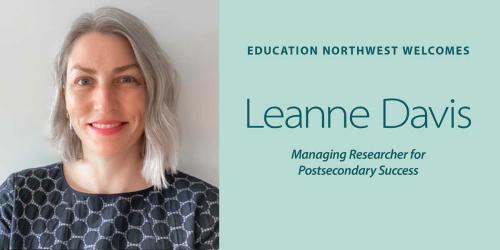Expanding College Access: Promising Strategies to Boost Students’ Financial Aid Completion
Students who pursue education after high school are more likely to earn more over their lifetime and have better health outcomes, job satisfaction and other benefits for themselves and their children.
Given all of these advantages, it’s disheartening when people choose not to pursue postsecondary education because they think college is too expensive and/or they fear debt.
Unfortunately, huge gaps in postsecondary enrollment exist based on family income. For example, recent high school graduates from families in the lowest income quartile are 30 percent less likely to enroll in college than those from families in the highest income quartile.
Simply stated, the more well off your family is, the more likely you are to go to college.
Financial aid programs help close the aforementioned gaps, expanding college access to low- and middle-income students. These programs have also been shown to contribute to more equitable education outcomes by improving college enrollment and graduation rates for low-income students.Students who receive even modest grants are more likely to enroll and persist in college. Specifically, rigorous research evidence finds that an additional $1,000 of grant aid may increase college enrollment by 4 percentage points.
One key for students to receive financial aid is by filling out the Free Application for Student Aid, commonly known as the FAFSA. The U.S. government, states and educational institutions use the FAFSA to determine the types and amount of aid students are eligible to receive.
Not all students fill out the FAFSA, however.
Roughly a third of students who did not fill out the FAFSA in 2011–12 would have been eligible for a Federal Pell Grant, which provides aid for low-income undergraduate students and substantially lowers the cost of college.
We recently published a brief about barriers to FAFSA completion, as well as strategies educators can employ to boost the number of students who complete the FAFSA. The brief is available for download, and these are some of our key findings:
- Students and families do not believe they have financial need or would qualify for financial aid. Again, a third of students who indicated they did not need aid—and, thus, did not fill out the FAFSA—were actually eligible for a Federal Pell Grant.
- Students and families lack awareness and information about financial aid. An extensive literature review found that students’ primary source of information for financial awareness and preparedness was their parents—but parents (particularly those who did not attend college) may not know about financial aid opportunities for low-income students or understand how to access and use online financial aid resources.
How can educators help boost their students’ FAFSA completion? Here are a few promising strategies.
Provide Early, Accurate, Comprehensive and Clear Information
Thoughtfully planning how and when students and families receive information about the FAFSA might be less impactful than personalized assistance, but it can make a positive difference.
Correct Misperceptions
Two tools to help students and families address common misperceptions about the cost of college and the value of higher education are the U.S. Department of Education’s FAFSA4caster (which estimates the amount of federal aid for which a student may be eligible) and the College Scorecard (which provides information about costs associated with specific colleges).
Use Student-level Data to Guide FAFSA Outreach
Using student data is an emerging strategy. One example is the FAFSA Completion Project, which provides individuals in select states with weekly data about which students have completed the FAFSA. This real-time data can help schools target their FAFSA-completion efforts on students who need it most.


